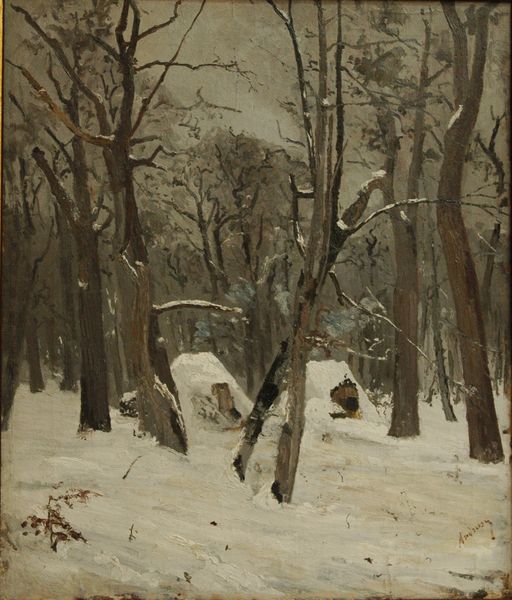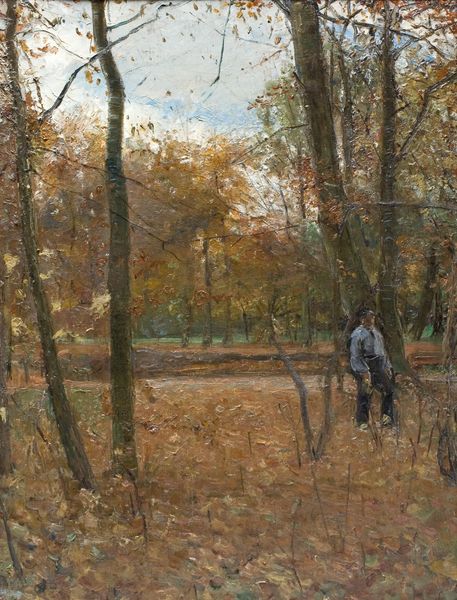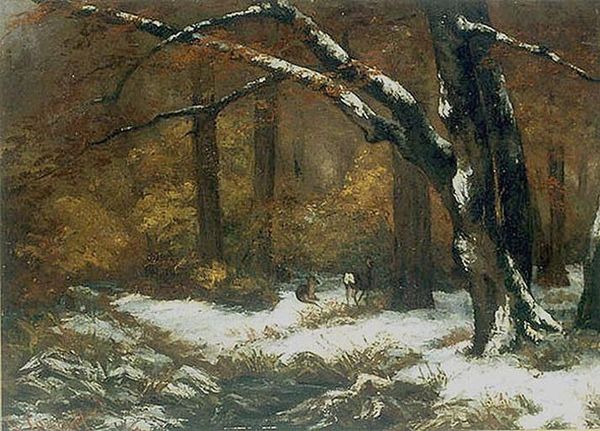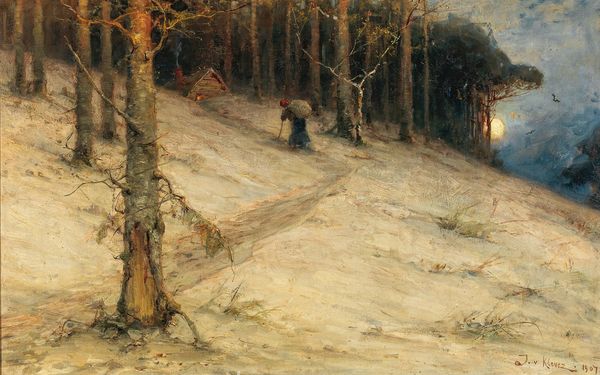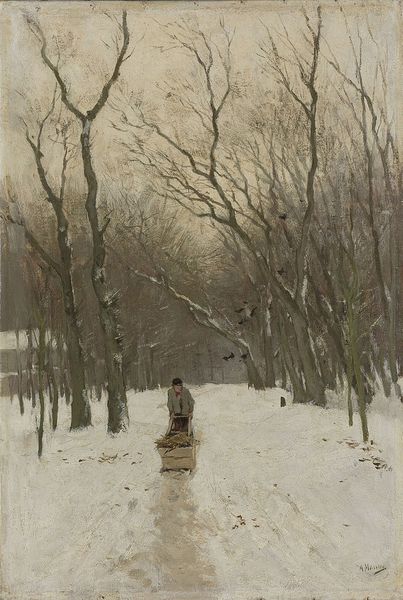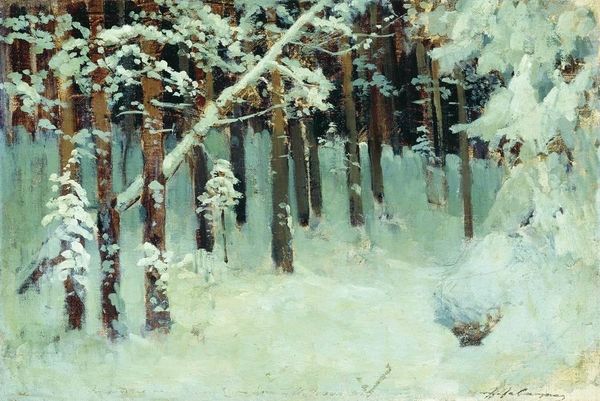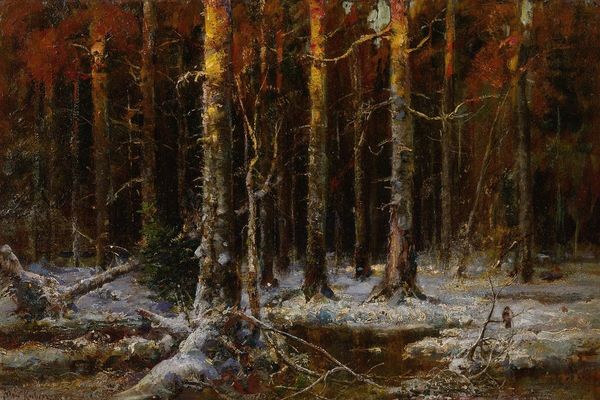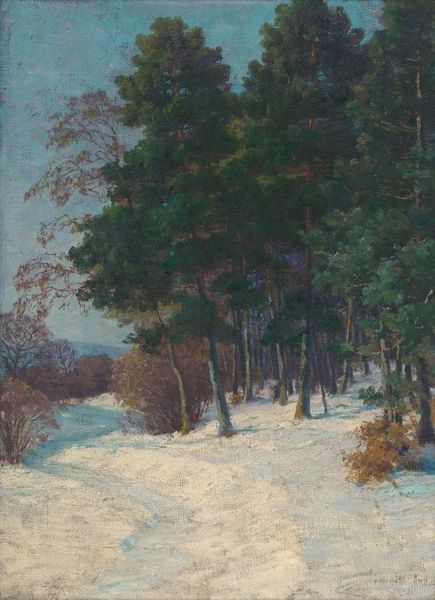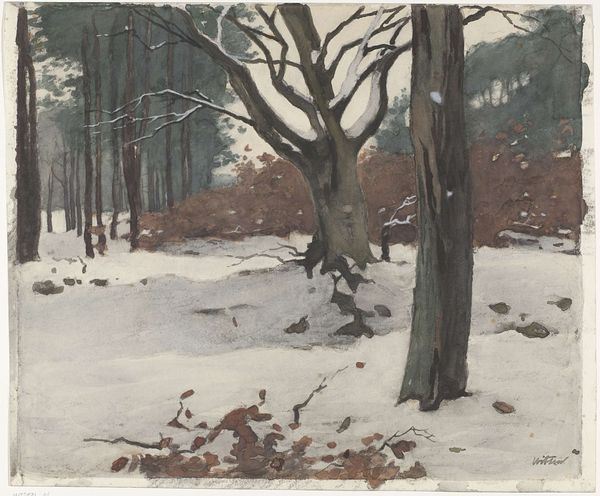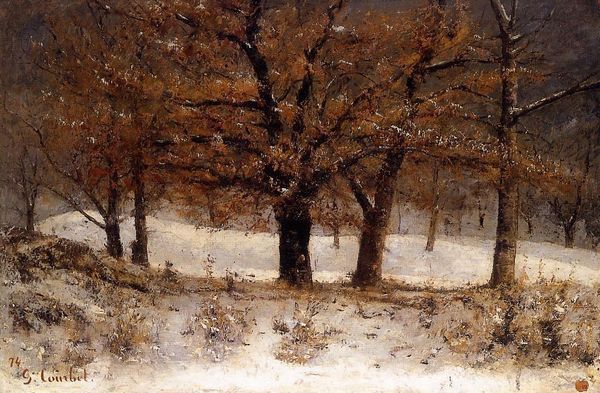
painting, plein-air
#
painting
#
impressionism
#
plein-air
#
landscape
#
nature
#
genre-painting
#
realism
Copyright: Public Domain: Artvee
Curator: This is Ladislav Mednyánszky’s painting titled “Woodcutter,” created sometime between 1885 and 1895. Editor: My initial reaction is the isolation of the lone figure, huddled by that meager fire. It evokes a profound sense of solitude. The raw texture of the paint and muted tones amplify the grim atmosphere, a stillness in a silent snowy forest. Curator: Absolutely, the painting resonates with themes of human endurance amidst a vast and indifferent nature. This character appears regularly in paintings from this period—a man whose livelihood quite literally depended on interacting with the elements. Consider the historical context of deforestation and its cultural symbolism related to both provision and loss of natural resources. Editor: Considering that Mednyánszky embraced plein-air painting, one cannot ignore the socio-economic conditions under which this landscape became his studio. Observe the brushstrokes – thick, almost sculptural in the snow, in stark contrast with the more ephemeral treatment of the smoke from the small fire. I wonder what types of pigments would have been used to create such distinct textures. Curator: You bring up an important point about the physicality of the work and its environmental story. We often associate the symbol of fire with domestic comfort and community, yet here it accentuates the figure's marginal position, set in a stage between shelter and complete exposure to the elements. There is a certain visual echo—his small flame set against a boundless woodsy backdrop, humanity presented as an almost negligible force compared to its larger natural setting. Editor: I agree. It’s precisely this juxtaposition of figure and landscape that fascinates me. The act of chopping wood itself speaks to cycles of labor, resources, and consumption. Considering the Impressionist influence, I imagine that, depending on where one found the material to create the paint—perhaps minerals, ground and suspended with binders derived from the local landscape and wildlife, we find ourselves closer to nature’s materiality that Mednyánszky represents in subject and his medium. Curator: Indeed, so we are faced not just with an image of work but of nature. It is as if both subject and method point to our entangled fate within these grander, environmental narratives that pre-exist and succeed us. Editor: And it prompts us to consider the intricate network that constitutes “landscape” itself. I feel like a similar sort of unravelling takes place even today when confronted with questions about climate and resource. Thank you for illuminating these fascinating layers of meaning.
Comments
No comments
Be the first to comment and join the conversation on the ultimate creative platform.
